Syrian Candies
February 13th, 2010
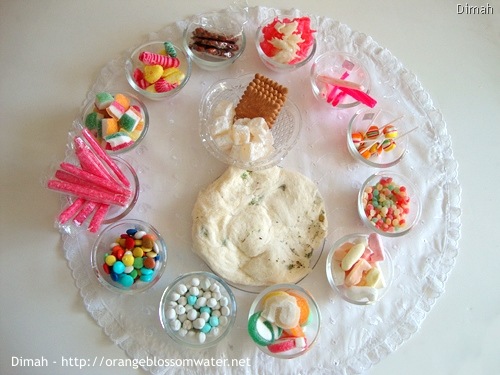
Most people know marshmallows, jelly beans, licorice wheels and other famous candies, but nobody knows the Syrian candies such as Allikeh, Jarja’iyeh, Nabbout, Qabaqib Ghawar, Sharab Al-Sheikh Shamel and other candies. This post is about the most famous Syrian candies.
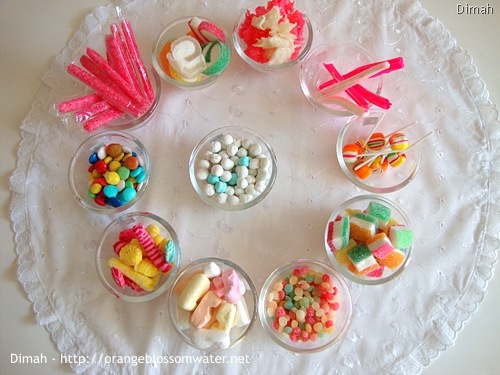
More pictures with details:
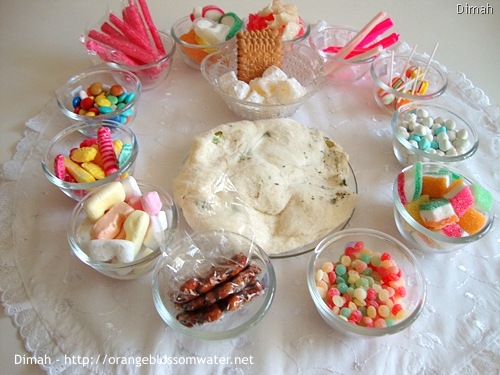
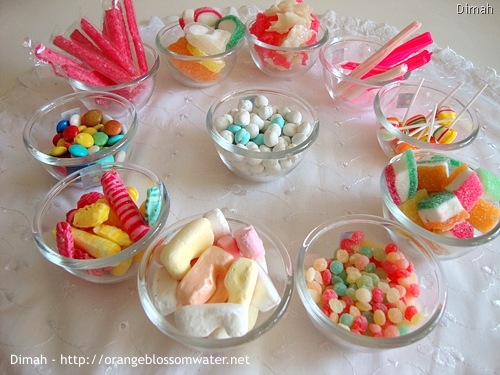
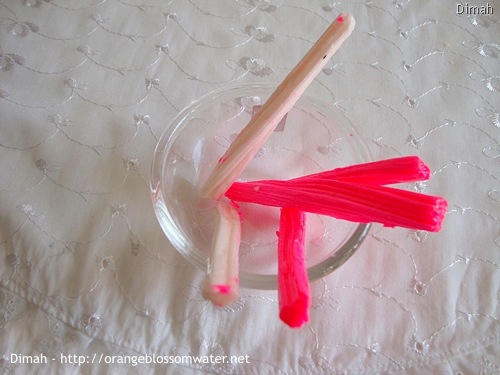
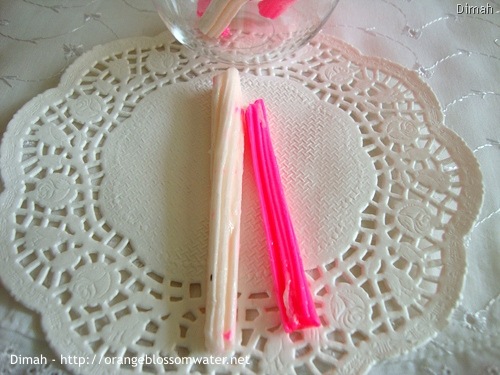
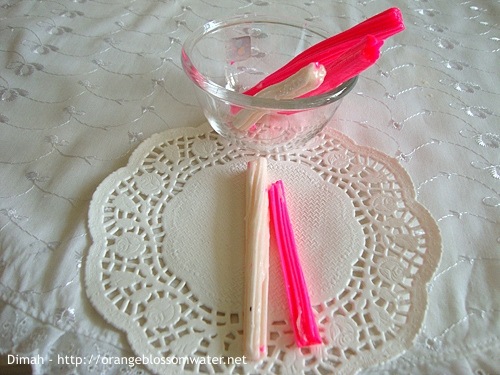
Above: Allikeh.
Allikeh is a chewy candy. It is prepared from sugar syrup mixed with rose water, and stretched several times until it has the shape in the picture, and is available as white and pink.
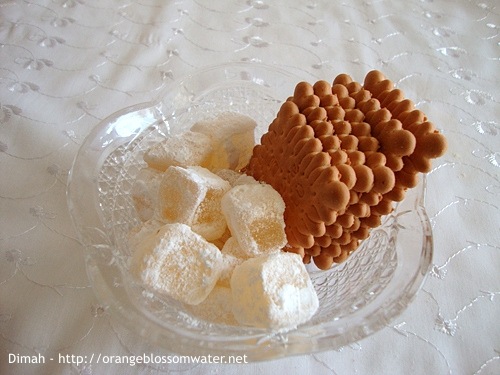
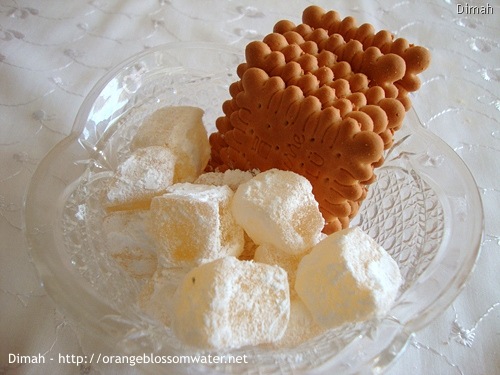
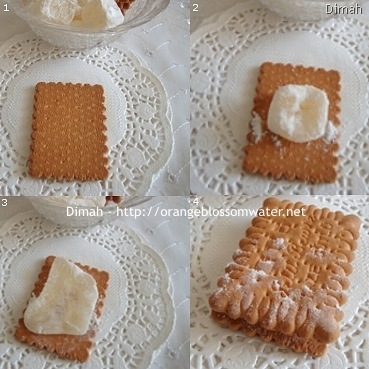
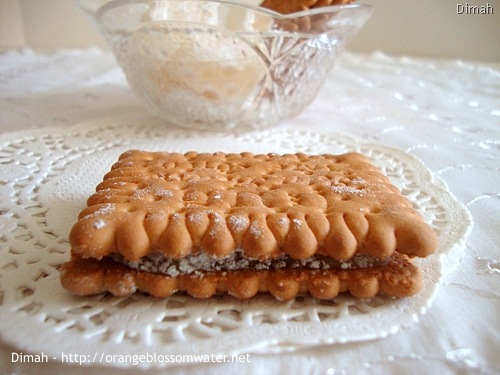
Above: Baskout wa Raha.
Baskout wa Raha means biscuits and loukoum, we usually eat loukoum as a sandwich, as you see in the steps above, to bring a biscuit, add the loukoum and stretch it then add another biscuit over it then serve, this is the traditional way of eating loukoum.
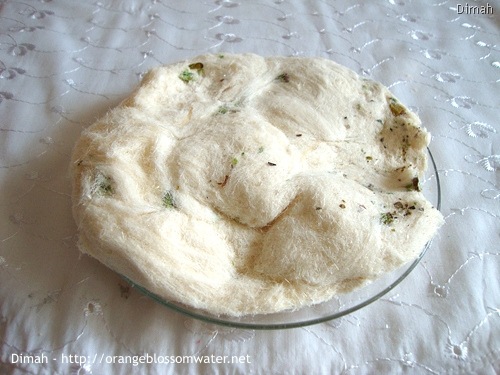
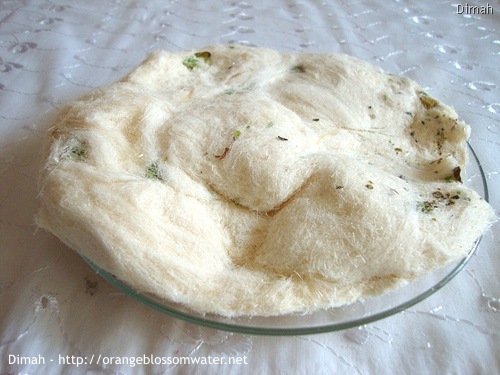
Above: Ghazel Al-Banat or Sha’r Al-Banat.
Ghazel Al-Banat or Sha’r Al-Banat. Sha’r in Arabic means hair, and Al-Banat means girls, so it took the name from the shape because it looks like the hair of a girl. It is prepared in a hot pot from flour and sugar syrup, then formed into a shape similar to hair.
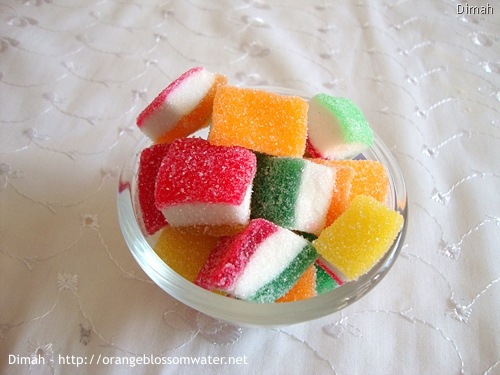
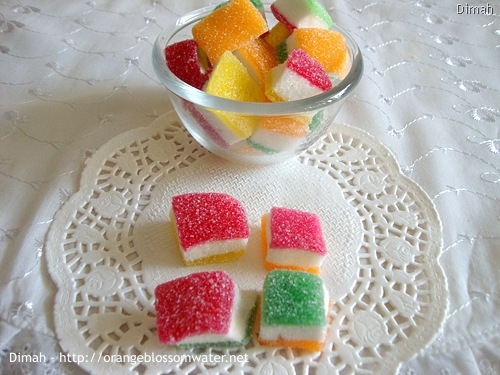
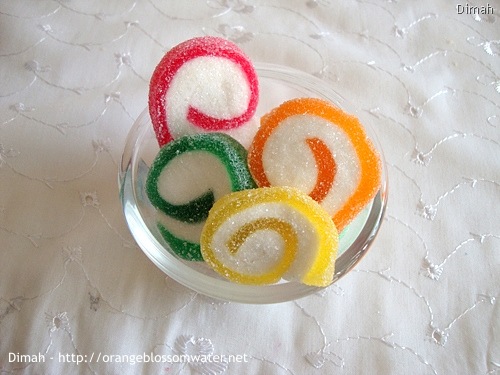
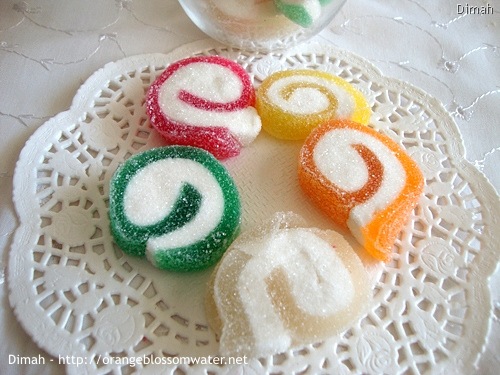
Above: Gouma.
Gouma is a jelly candy. The one that looks like square in the picture is formed as several layers, each layer has its flavor, red is strawberry, yellow is lemon, and orange is orange flavor. Also the wheels have different flavors.
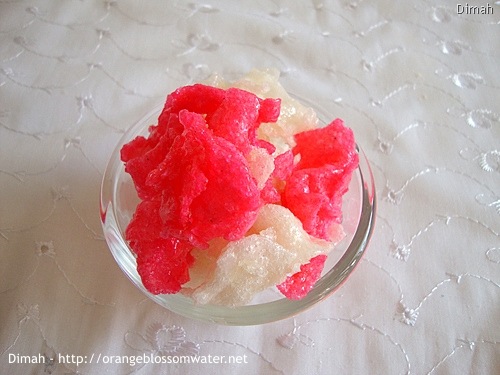
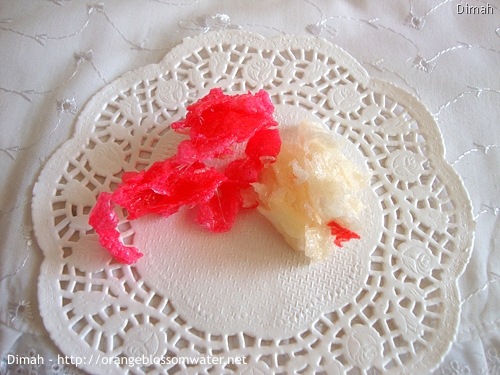
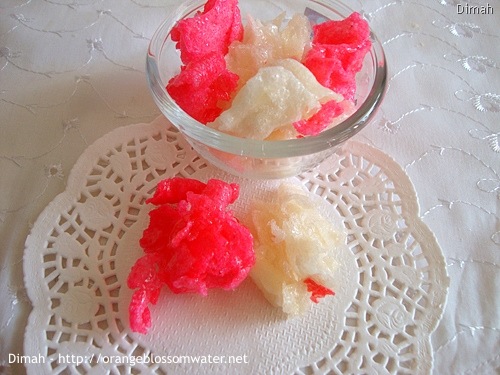
Above: Jarja’iyeh.
Jarja’iyeh, is a specialty of Homs, Syria. In Hama, it is named Jarja’iyeh but in Homs it has other names such as Khebziyeh, Hamra and Bida, Sailan Bel-A’sal, Qermashliyeh. I found an Article in Arabic about how manufactures make it, the traditional way, here what they said:
To make Jarja’iyeh:
First stage is 15 days: flour is mixed with water and salt so the batter is liquid, then this batter is poured over a big flat pan (pan does not have edges), this pan is greased with oil or vegetable ghee and must be heated to a high heat, after pouring the batter, it becomes like a big very thin circle, remove this circle and put to dry for two days or more, then put in a special bags for 15 days (the bags are called sugar bags, should not be from nylon because that leads to the formation of molds).
Second stage after 15 days: they take the circles which were stored in bags, and break them into pieces, then deep fry in oil or vegetable ghee in a copper pan, then let dry for day or two days. After drying process, take the fried pieces and dip in sugar syrup, then put these dipped pieces on a marble table for 30 minutes, then store in bags in layers the red color then then white, they use a color to make them red.
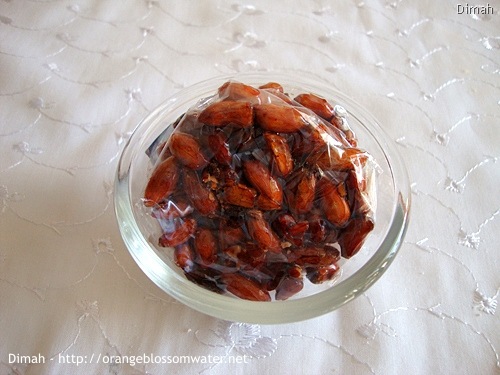
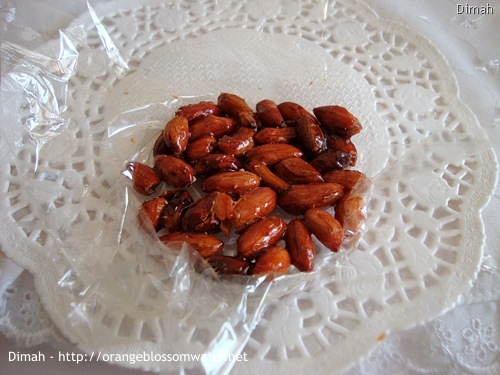
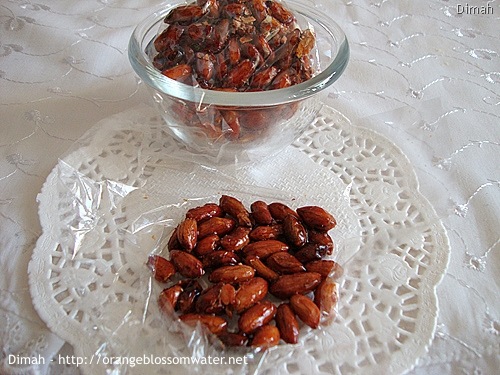
Above: Mandaminah.
Mandaminah is prepared from peanuts and sugar, and it can be prepared at home, and now it is available in markets wrapped as the picture above.
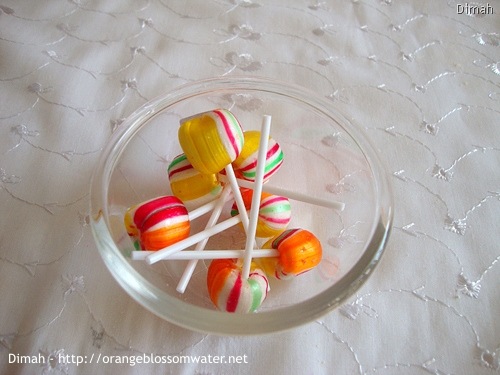
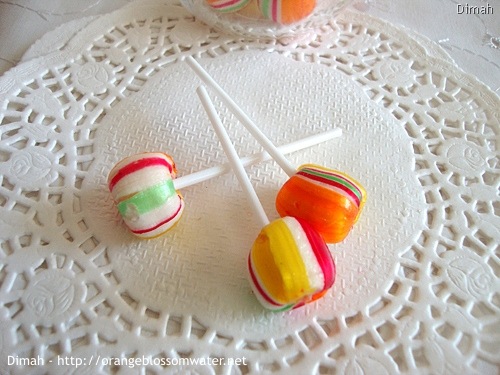
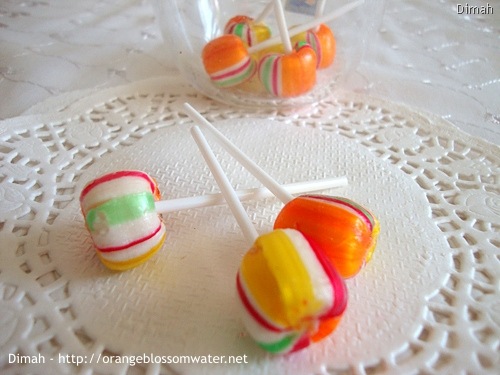
Above: Massas.
Massas means lollipops, and these lollipops are the popular one in Syria, they are either colored with many colors like the picture, or with two colors only which are white and pink.
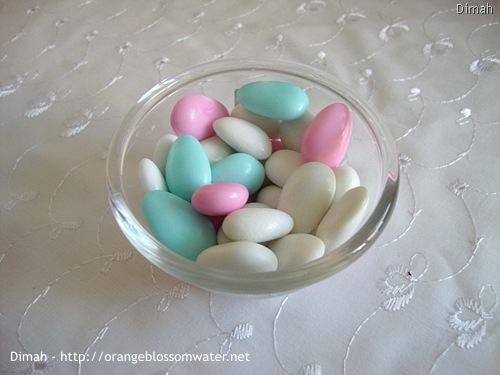
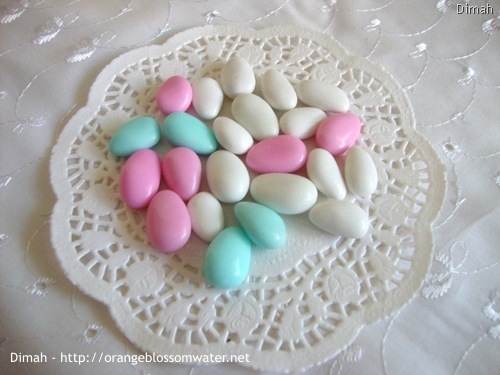
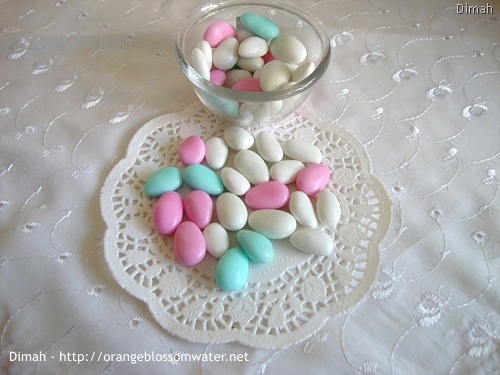
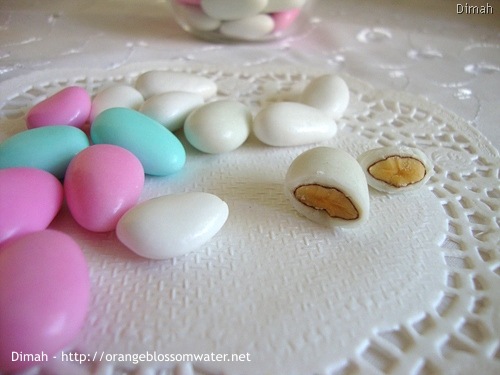
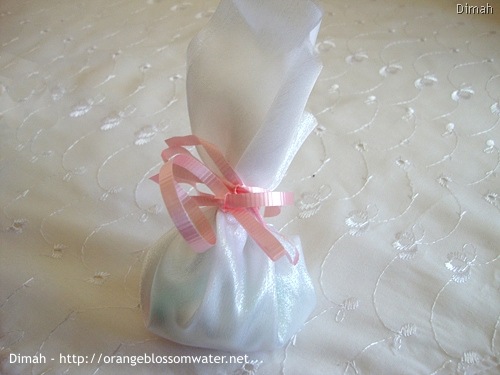
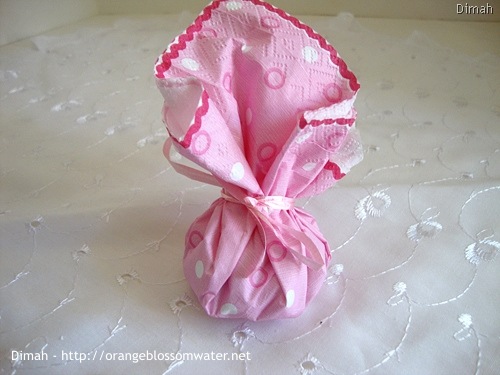
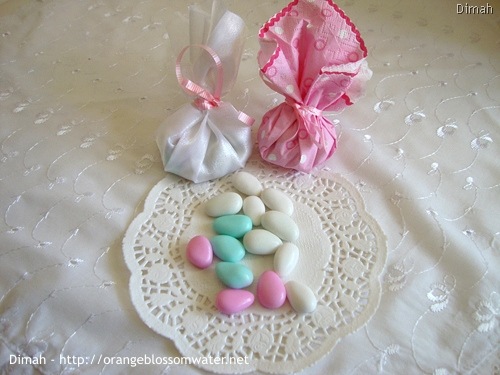
Above: Mlabbas.
Mlabbas is sugar coated almonds, they are a part of any celebration such as weddings, newborn party, Hajj and other occasions. Mlabbas is usually wrapped in a beautiful cloth called “Buqja” or “Surra” and tied with ribbons then presented to guests in these occasions as you see in the pictures above. Damascus is known for making mlabbas, almonds are coated with sugar and the traditional colors are white, blue and pink.
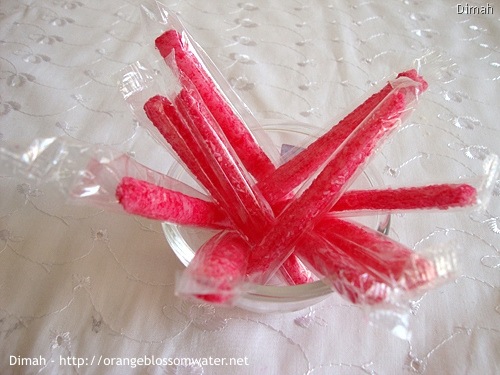
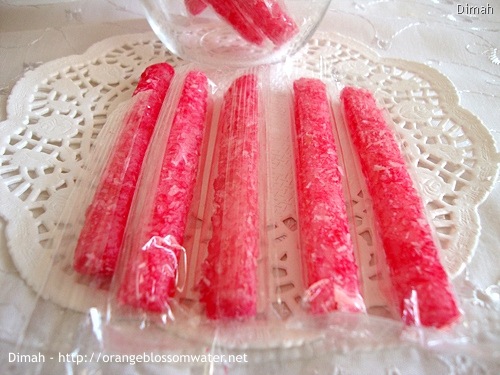
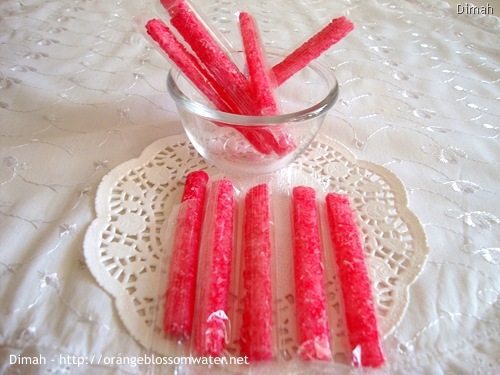
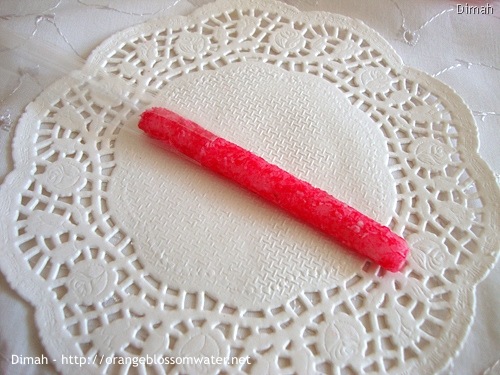
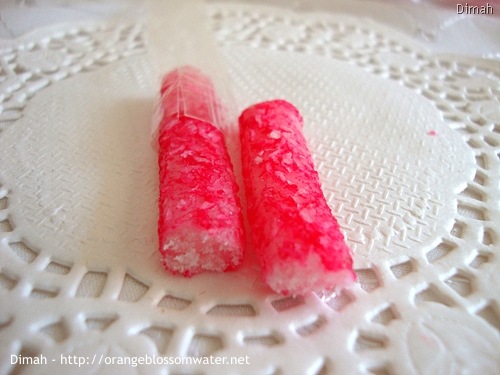
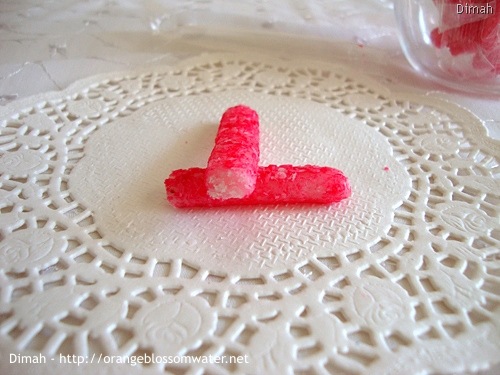
Above: Nabbout.
Nabbout is prepared from coconuts and sugar syrup and it is famous for its shape and pink color.
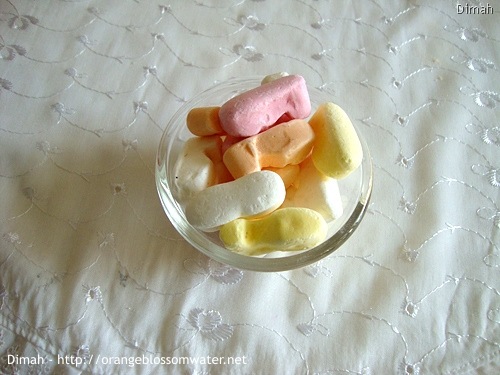
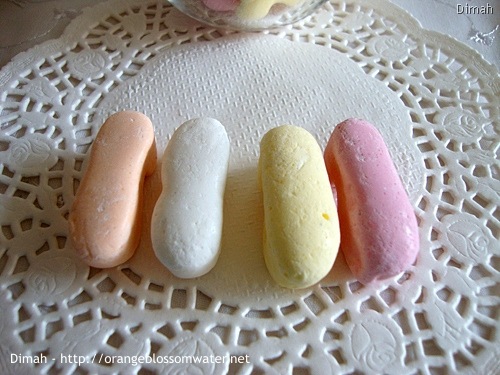
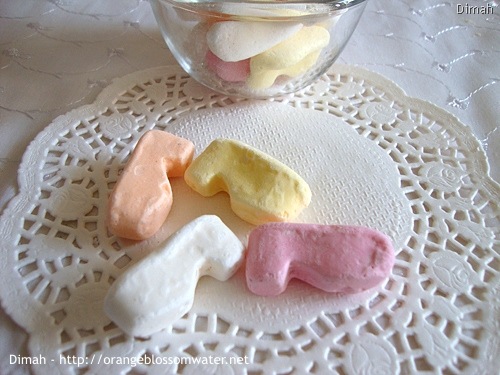
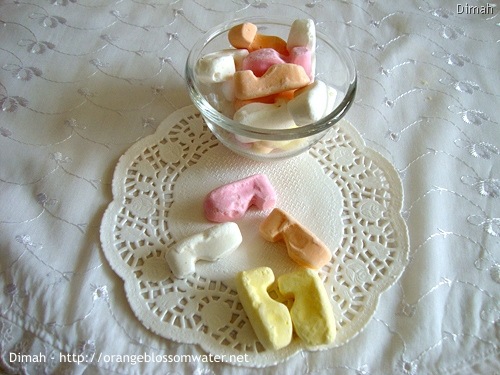
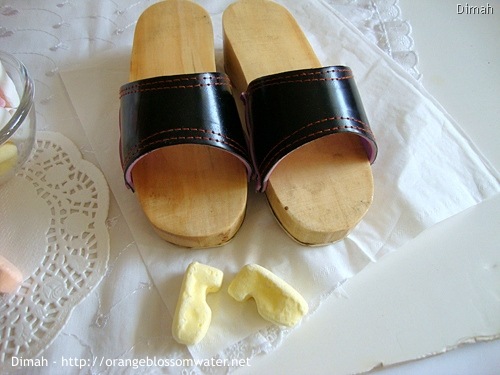
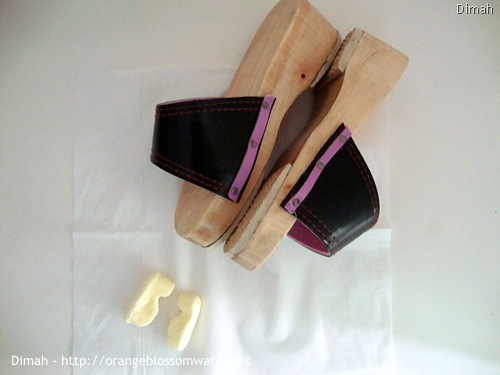
Above: Qabaqib Ghawar. Qabaqib Ghawar is a hard candy, each color has its own flavor. There is a story behind the name “Qabaqib Ghawar”:
The first part of the name “Qabaqib”: You can see in the picture a slipper, this slipper is a traditional Syrian slipper and called in Arabic Qebqab (the plural is Qabaqib), the shape of the candy is similar to the slipper that’s why the name is started with Qababqib.
The second part of the name “Ghawar”: Ghawar is a famous character in Syrian cinema and television series, Ghawar was known for wearing the Qebqab (the slipper) in all movies and series, that’s why the candy is called “Qabaqib Ghawar”.
So the shape of the candy is similar to the slipper, a famous character his name is Ghawar used to wear the slipper, they combined these two reasons and gave the candy the name “Qabaqib Ghawar”.
The picture below, Ghawar is holding his slipper.
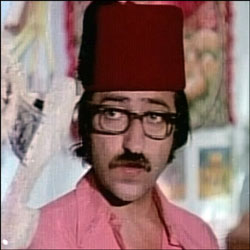
The video below shows Ghawar singing, in the song they used the slippers as instrument in the music.
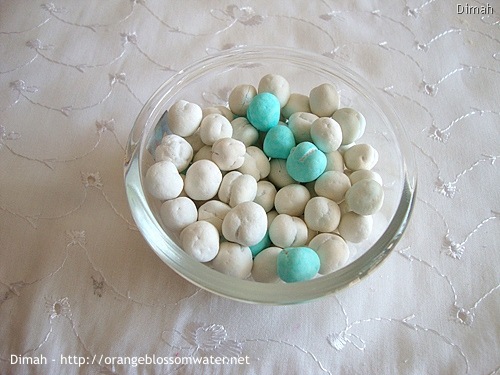
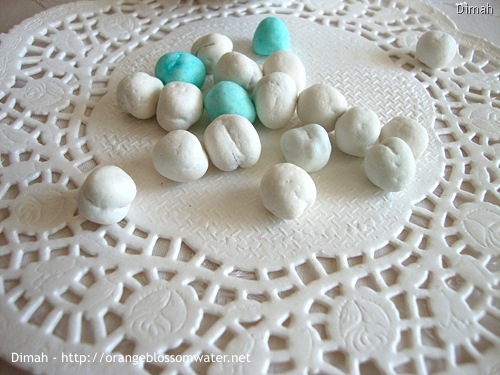
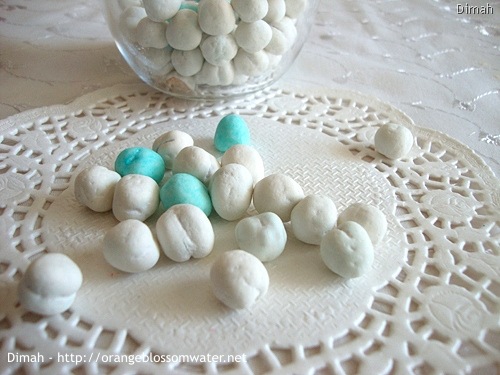
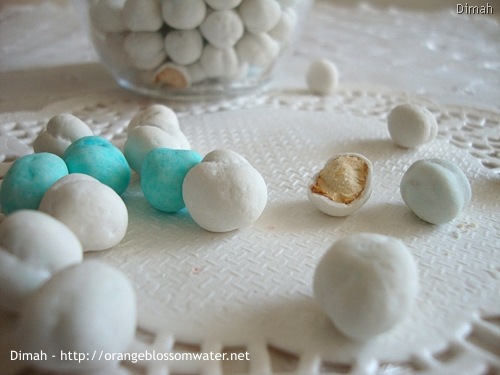
Above: Qdameh Sekariyeh. Qdameh Sekariyeh is sugar coated chickpeas, the traditional colors are white, blue, and pink.
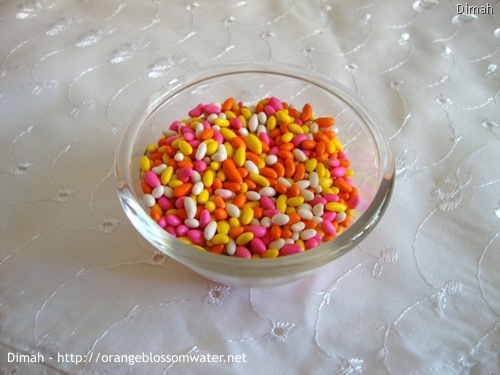
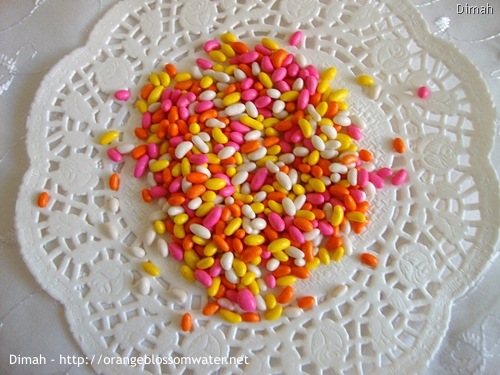
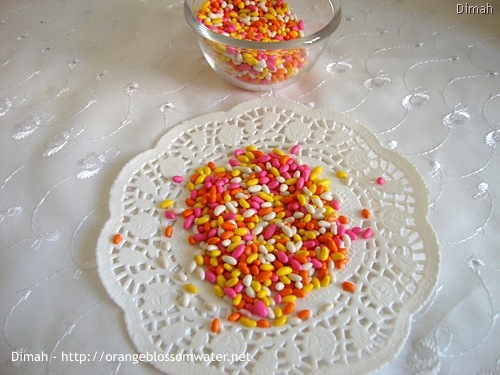
Above: Qumbuz.
Qumbuz is sugar coated fennel seeds. In Hama it is called Qumbuz, but in Damascus it is called Hab Al-A’ziz, the name Hab Al-A’ziz is given to the candy because it looks like hail. This candy is prepared by dipping fennel seeds in sugar for two days, then dry them, then colors are added.
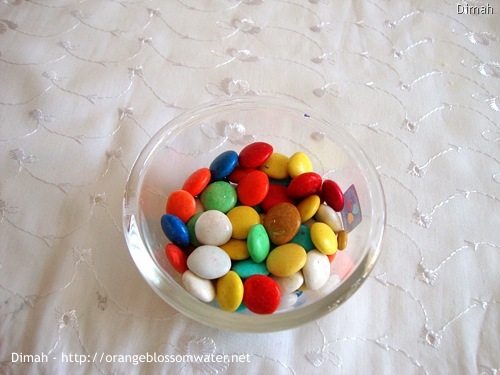
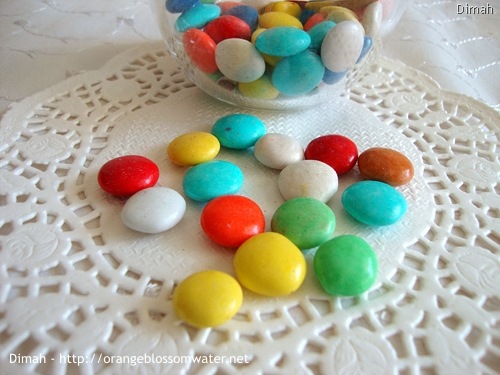
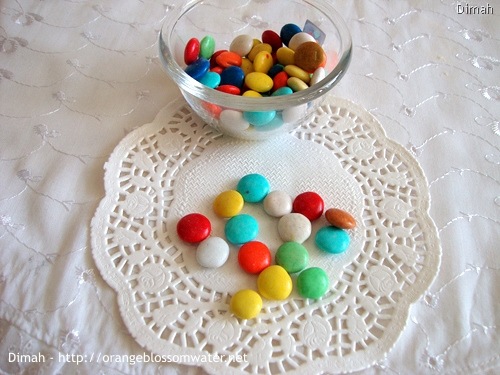
Above: Samiri.
Samiri is similar to Smarties, but Samiri is a Syrian brand. I tried Smarties and Samiri, and compared them and I found a difference in the taste.
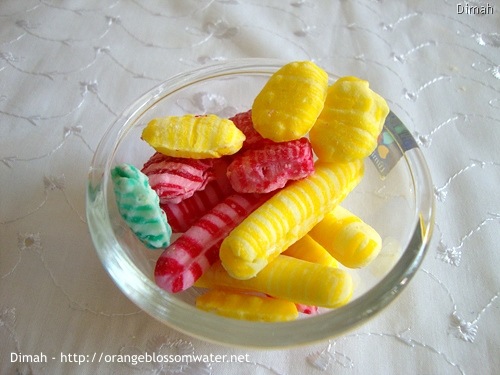
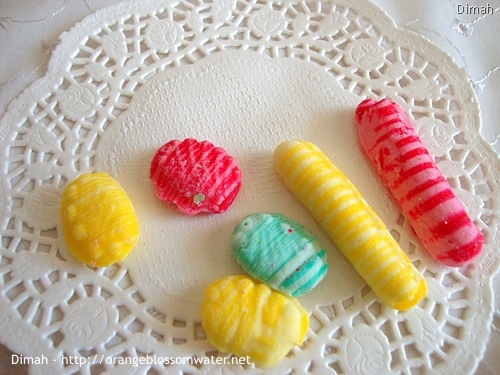
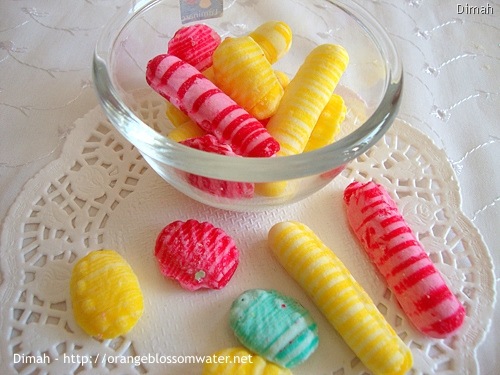
Above: Sharab.
Sharab is a candy with different flavors, the word Sharab is used in Hama only, in Damascus they use the word Skaker, in other cities the word Bonbon is used.
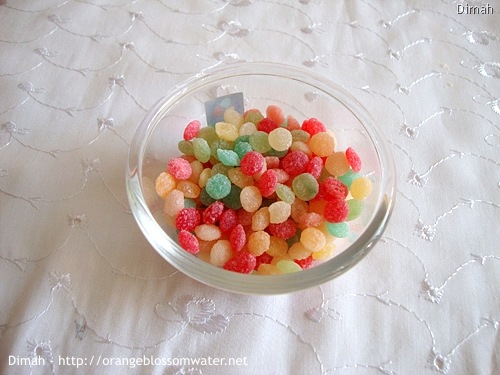
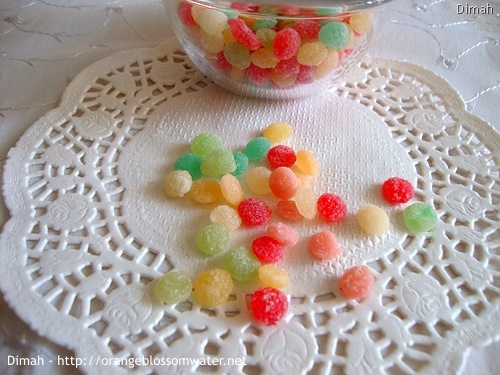
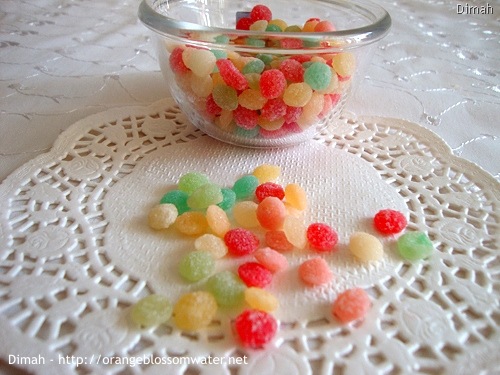
Above: Sharab Al-Sheikh Shamel.
Sharab Al-Sheikh Shamel is a specialty of Hama, Syria. Each color of this candy has a flavor such as strawberry, lemon, orange, and others. There is a story behind the name “Sharab Al-Sheikh Shamel”:
In Hama there was a man his name “Shamel” and was known as “Al-Sheikh Shamel”, he is an Islamic scholar and his job was to write the marriage contract according to Islamic laws, his pocket was always filled with this candy “Sharab Al-Sheikh Shamel” and each time he met a child, he gave him from this candy, so the candy becomes famous and named after this man.
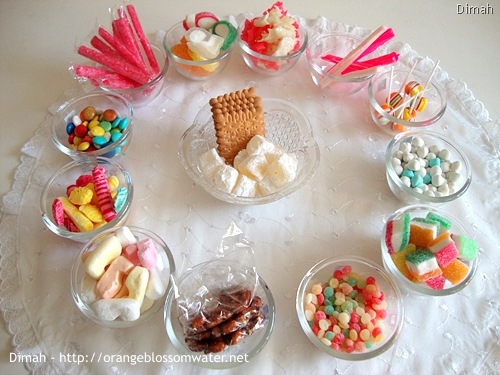
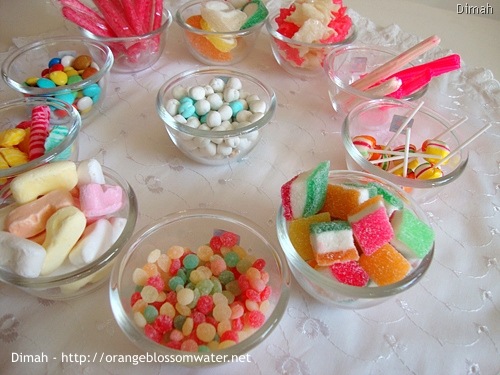
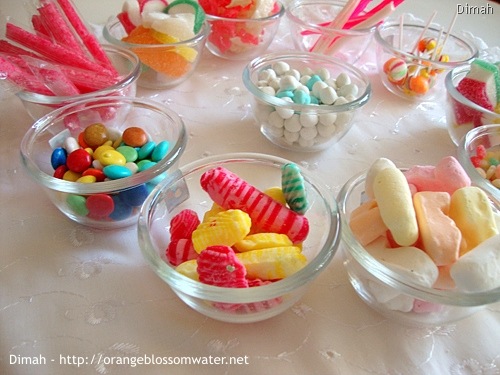
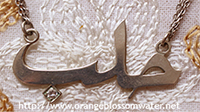
I am ashamed to confess that I wolfed down half a kilo a day ( over a pound )of ‘dragées fondantes’ during a visit to Syria… These sugar-coated almonds are absolutely out of this world, but unfortunately, they don’t seem to be exported… and for some reason, you don’t even mention them… maybe because they are unavailable and only made to order…
They bear no relation to Western sugar-coated almonds – they are a thousand times better – but are probably their ancestors, since the Crusaders brought back the recipe to Europe…
Arunah: Thanks for coming by!
I’ve add sugar coated almonds to the post.
Great photo!
tasteofbeirut: Thanks for stopping by and for your kind comment!
Hello Dimah !
Thank you for the effort, but these are ORDINARY sugar-coated almonds to be found everywhere…
I was talking about ‘dragées fondantes’ which are very primitive looking, in brownish hues with a light dusting of sugar and a coarse surface, only made to order. Their taste is unforgettable…
Arunah: Thanks for stopping by!
These are not available in Hama. My friend used to buy them regularly in Damascus without a special order.
What a beautiful post! I thoroughly enjoyed reading this. When I travel, I always hunt for different candies I can’t find at home and bring them back with me. These look wonderful. Great pictures and descriptions!
These look delicious! Thanks for the explanations!
That was very informative! And the candies look very tasty, of course.
hola, I’m so happy I’ve just discovered your blog via @foodbrige tweets.
congrats you have a lovely site and I will keep coming back to try your recipes.
(oh, and I LOVE your blogs’ name!)
So pretty.
A cross between a rainbow and a bouquet of flowers, edible ones.
Those colors are gorgeous! I would love to step into a candy shop and find all of those sweets.
Thank you for this post and blog, just stumbled across it. Have been working on something about Syria and would love to link to your post. Thanks so much!
thanks for sharing. i’m definitely going to find those sugar-covered chickpeas. i see those coated fennel seeds in south-asian stores. fennel on its own is delicious, too.
Kelly @ The Startup Wife: Thanks for your kind words!
jami: Thanks for stopping by!
Thi: Thanks!
heidileon: Thanks for the lovely comment!
Celeste Allyn: Thank you!
anna: Thanks for visiting!
OysterCulture: Thank you so much!
madura: Thanks!
I just love youre site. Some of the sweets are the same in my country (Romania), biscuits and raha was one of my first sweets from the childhood.
Thanks for your recipes, I’ll try some for sure.
do you know where I can get Jarja’iyeh from in the states?
charlene: Sorry charlene, Jarja’iyeh is available only in Syria.
Where can I purchase these unique candies
These are from Syria